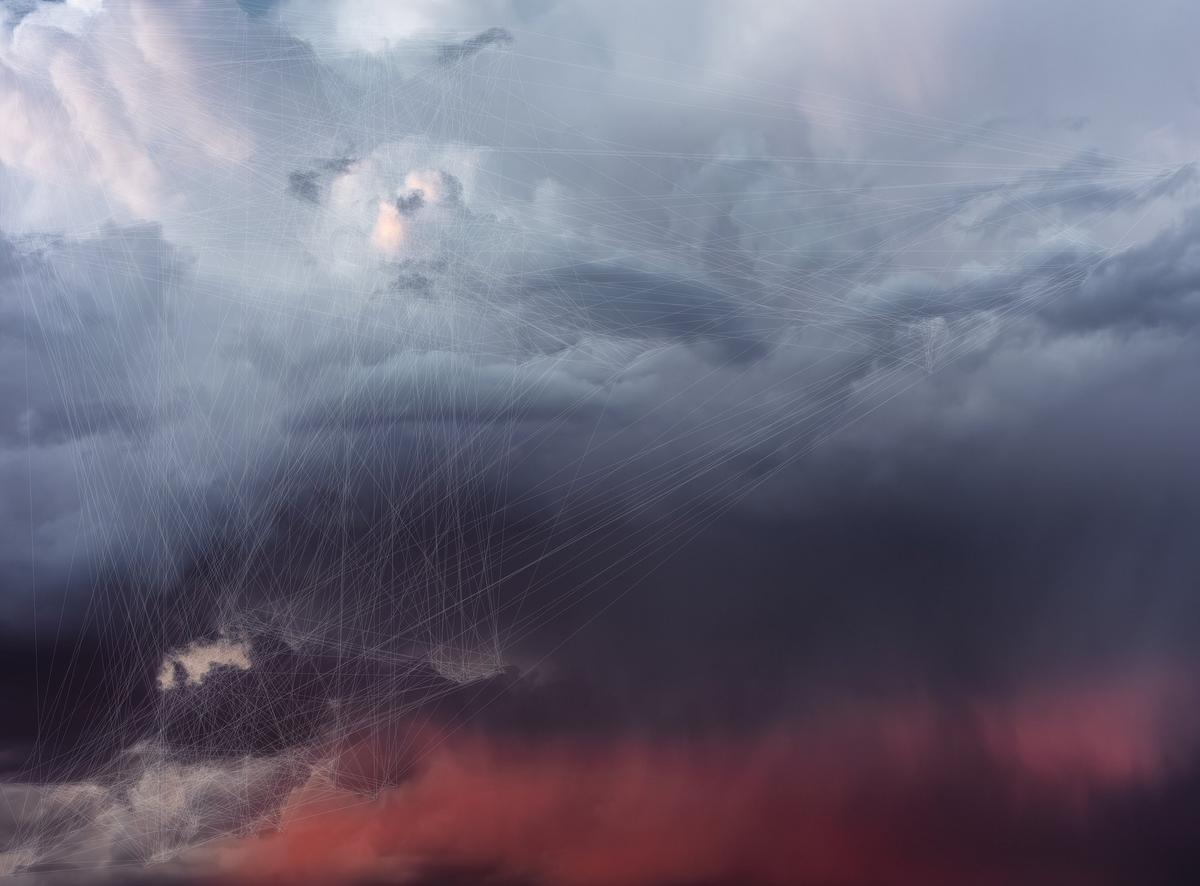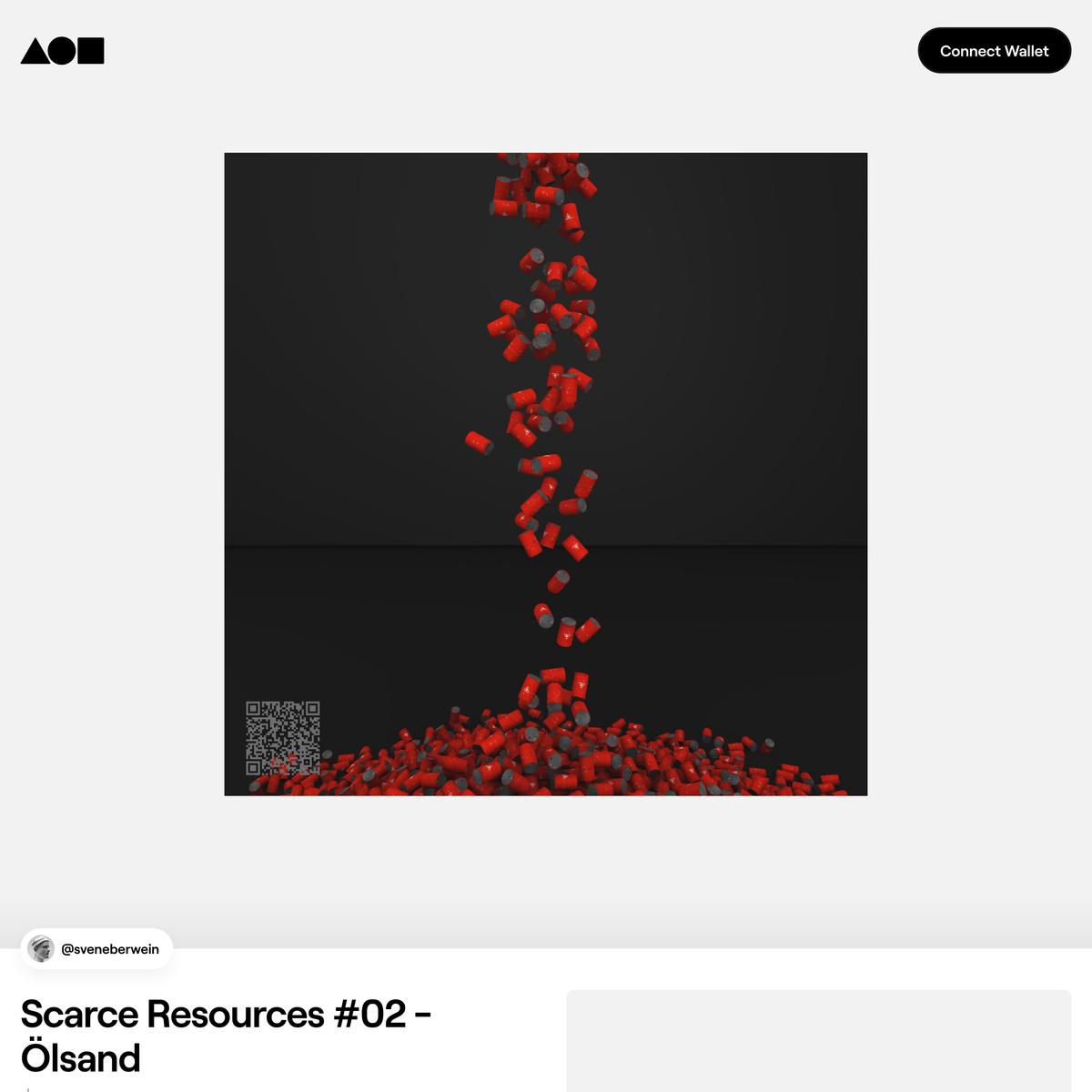syn·site
in Johanna Flato's terms: an ever-evolving conceptual constellation, an entangled situating crystallized from a myriad of fragmented realities. Simultaneity and singularities dance in a swirling waltz of intertwined moments and spaces, each adding to the cacophony and harmony of this complex site. A syn-site is a living, breathing tapestry of the world, constantly rewriting its own narrative, always open to edits, always challenging what we have come to accept as static or fixed. It is a manifestation of a world that is anything but singular or isolated — it is a world that is complex, interwoven, and infinitely entangled.
in Johanna Flato's terms: an ever-evolving conceptual constellation, an entangled situating crystallized from a myriad of fragmented realities. Simultaneity and singularities dance in a swirling waltz of intertwined moments and spaces, each adding to the cacophony and harmony of this complex site. A syn-site is a living, breathing tapestry of the world, constantly rewriting its own narrative, always open to edits, always challenging what we have come to accept as static or fixed. It is a manifestation of a world that is anything but singular or isolated — it is a world that is complex, interwoven, and infinitely entangled.
SYN (along with, at the same time | from Greek SYN, with | ~SYNTHETIC) + SITE (N: point of event, occupied space, internet address; V: to place in position | from Latin SITUS, location, idleness, forgetfulness | ~WEBSITE ¬cite ¬sight), cf. SITE/NON-SITE (from Robert Smithson, A PROVISIONAL THEORY OF NONSITES, 1968)









...it is possible to assert that cyberspace is “just like” real space only if one ignores that cyberspace is peopled by real users who experience cyberspace and real space as different but connected, with acts taken in one having consequences in the other. In all cases, theories of cyberspace as separate space give short shrift to cyberspace as both extension and evolution of everyday spatial practice—as a space neither separate from real space nor simply a continuation of it. That is to say, they ignore both the embodied, situated experience of cyberspace users and the complex interplay between real and digital geographies.
...it is possible to assert that cyberspace is “just like” real space only if one ignores that cyberspace is peopled by real users who experience cyberspace and real space as different but connected, with acts taken in one having consequences in the other. In all cases, theories of cyberspace as separate space give short shrift to cyberspace as both extension and evolution of everyday spatial practice—as a space neither separate from real space nor simply a continuation of it. That is to say, they ignore both the embodied, situated experience of cyberspace users and the complex interplay between real and digital geographies.
...it is possible to assert that cyberspace is “just like” real space only if one ignores that cyberspace is peopled by real users who experience cyberspace and real space as different but connected, with acts taken in one having consequences in the other. In all cases, theories of cyberspace as separate space give short shrift to cyberspace as both extension and evolution of everyday spatial practice—as a space neither separate from real space nor simply a continuation of it. That is to say, they ignore both the embodied, situated experience of cyberspace users and the complex interplay between real and digital geographies.









It’s not a physical landscape. It’s a term reserved for the new technologies. It’s a landscape in the future. It’s as though you used technology to take you off the ground and go like Alice through the looking glass.
It’s not a physical landscape. It’s a term reserved for the new technologies. It’s a landscape in the future. It’s as though you used technology to take you off the ground and go like Alice through the looking glass.
It’s not a physical landscape. It’s a term reserved for the new technologies. It’s a landscape in the future. It’s as though you used technology to take you off the ground and go like Alice through the looking glass.



It is not purely that physical space is honest, whereas the internet is a site of deceit. Fetishizing the digital versus the physical in this way does a disservice to the imaginative potential of what worlds we can build therein.
It is not purely that physical space is honest, whereas the internet is a site of deceit. Fetishizing the digital versus the physical in this way does a disservice to the imaginative potential of what worlds we can build therein.
It is not purely that physical space is honest, whereas the internet is a site of deceit. Fetishizing the digital versus the physical in this way does a disservice to the imaginative potential of what worlds we can build therein.












we need to think with a paradigm that centers on the implosion of the worlds of bits and atoms into the augmented reality that has seemingly become ascendant.
we need to think with a paradigm that centers on the implosion of the worlds of bits and atoms into the augmented reality that has seemingly become ascendant.
we need to think with a paradigm that centers on the implosion of the worlds of bits and atoms into the augmented reality that has seemingly become ascendant.









"Computer vision and artificial intelligence have become ubiquitous. We are now living in a world of planetary-scale 'Smart Cities' that track license plates, cell phone signals, faces, and pedestrian movements; self-driving cars autonomously navigate urban environments; robotic factories use computer vision for quality assurance and logistics. The works in this exhibition seek to provide a small glimpse into the workings of these platforms, and into the underlying data that structures how machines 'perceive' images, language, landscapes, and people."
"Computer vision and artificial intelligence have become ubiquitous. We are now living in a world of planetary-scale 'Smart Cities' that track license plates, cell phone signals, faces, and pedestrian movements; self-driving cars autonomously navigate urban environments; robotic factories use computer vision for quality assurance and logistics. The works in this exhibition seek to provide a small glimpse into the workings of these platforms, and into the underlying data that structures how machines 'perceive' images, language, landscapes, and people."
"Computer vision and artificial intelligence have become ubiquitous. We are now living in a world of planetary-scale 'Smart Cities' that track license plates, cell phone signals, faces, and pedestrian movements; self-driving cars autonomously navigate urban environments; robotic factories use computer vision for quality assurance and logistics. The works in this exhibition seek to provide a small glimpse into the workings of these platforms, and into the underlying data that structures how machines 'perceive' images, language, landscapes, and people."
A single click of a mouse sets off a chain reaction and sends a signal to mining farms around the world, which go on to have a footprint of 35 kWh for an ‘average’ transaction, with emissions of close to 20 KgCO2 for that single mouse click [...] An ETH transaction is thousands times more costly than other internet activities that individuals typically engage in. [...] Transactions relating to NFTs however, have more complexities involved.
[...]
A single NFT can involve dozens of transactions, and potentially more. These include minting, bidding, cancelling, sales and transfer of ownership.
[...]
This single NFT’s footprint is equivalent to a EU resident’s total electric power consumption for more than a month, with emissions equivalent to driving for 1000Km, or flying for 2 hours.
A single click of a mouse sets off a chain reaction and sends a signal to mining farms around the world, which go on to have a footprint of 35 kWh for an ‘average’ transaction, with emissions of close to 20 KgCO2 for that single mouse click [...] An ETH transaction is thousands times more costly than other internet activities that individuals typically engage in. [...] Transactions relating to NFTs however, have more complexities involved.
[...]
A single NFT can involve dozens of transactions, and potentially more. These include minting, bidding, cancelling, sales and transfer of ownership.
[...]
This single NFT’s footprint is equivalent to a EU resident’s total electric power consumption for more than a month, with emissions equivalent to driving for 1000Km, or flying for 2 hours.
A single click of a mouse sets off a chain reaction and sends a signal to mining farms around the world, which go on to have a footprint of 35 kWh for an ‘average’ transaction, with emissions of close to 20 KgCO2 for that single mouse click [...] An ETH transaction is thousands times more costly than other internet activities that individuals typically engage in. [...] Transactions relating to NFTs however, have more complexities involved.
[...]
A single NFT can involve dozens of transactions, and potentially more. These include minting, bidding, cancelling, sales and transfer of ownership.
[...]
This single NFT’s footprint is equivalent to a EU resident’s total electric power consumption for more than a month, with emissions equivalent to driving for 1000Km, or flying for 2 hours.



one continuous self, two sides of a vivacious equation looped together in a continual narrative of daily living and human existence. The glitch splits the difference; it is a plank that passes between the two.
one continuous self, two sides of a vivacious equation looped together in a continual narrative of daily living and human existence. The glitch splits the difference; it is a plank that passes between the two.
one continuous self, two sides of a vivacious equation looped together in a continual narrative of daily living and human existence. The glitch splits the difference; it is a plank that passes between the two.






The critique stems from the systematic bias to see the digital and physical as separate; often as a zero-sum tradeoff where time and energy spent on one subtracts from the other. This is digital dualism par excellence. And it is a fallacy.
The critique stems from the systematic bias to see the digital and physical as separate; often as a zero-sum tradeoff where time and energy spent on one subtracts from the other. This is digital dualism par excellence. And it is a fallacy.
The critique stems from the systematic bias to see the digital and physical as separate; often as a zero-sum tradeoff where time and energy spent on one subtracts from the other. This is digital dualism par excellence. And it is a fallacy.



I am proposing an alternative view that states that our reality is both technological and organic, both digital and physical, all at once. We are not crossing in and out of separate digital and physical realities, ala The Matrix, but instead live in one reality, one that is augmented by atoms and bits. And our selves are not separated across these two spheres as some dualistic “first” and “second” self, but is instead an augmented self.
I am proposing an alternative view that states that our reality is both technological and organic, both digital and physical, all at once. We are not crossing in and out of separate digital and physical realities, ala The Matrix, but instead live in one reality, one that is augmented by atoms and bits. And our selves are not separated across these two spheres as some dualistic “first” and “second” self, but is instead an augmented self.
I am proposing an alternative view that states that our reality is both technological and organic, both digital and physical, all at once. We are not crossing in and out of separate digital and physical realities, ala The Matrix, but instead live in one reality, one that is augmented by atoms and bits. And our selves are not separated across these two spheres as some dualistic “first” and “second” self, but is instead an augmented self.


